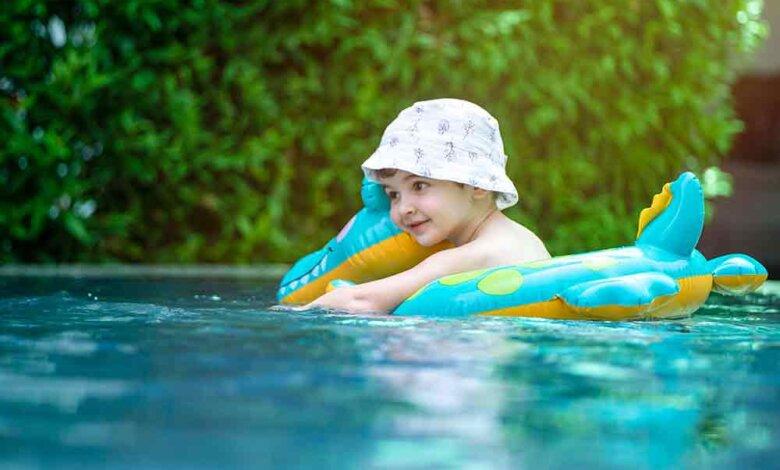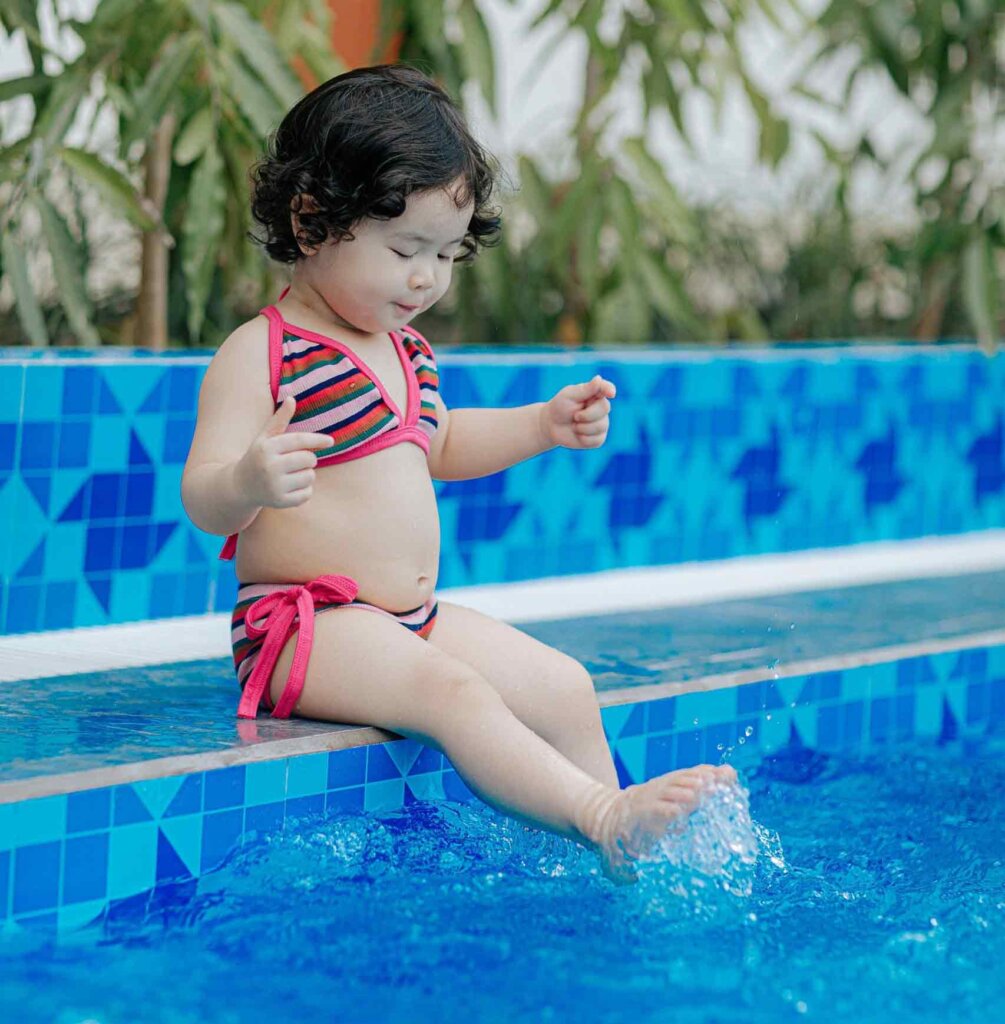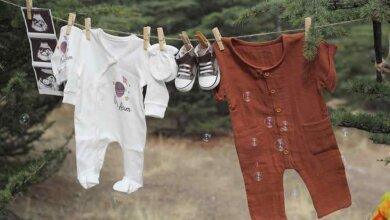
Introduction
- Importance of Sun Protection for Babies (baby uv swimwear)
- Babies have delicate skin that is highly vulnerable to the harmful effects of the sun’s ultraviolet (UV) radiation.
- Sunburns during infancy can lead to long-term skin damage and increase the risk of skin cancer later in life.
- Therefore, it is crucial to provide adequate sun protection for babies from an early age.
- Why UV Swimwear is Crucial for Babies
- Regular clothing alone cannot offer sufficient protection from harmful UV rays.
- UV swimwear is specially designed with sun-blocking properties to shield a baby’s sensitive skin from excessive sun exposure.
- It is a practical and stylish solution to ensure your little one stays safe while enjoying water activities under the sun.
Understanding UV Radiation and Its Effects on Babies
- What is UV radiation?
- UV radiation is a type of energy emitted by the sun that can harm the skin’s cellular DNA.
- It can be categorized into three types: UVA, UVB, and UVC.
- UVA rays penetrate the skin deeply and cause premature aging, while UVB rays primarily cause sunburns.
- Vulnerabilities of a baby’s delicate skin
- A baby’s skin is thinner and more sensitive than that of adults, making it more susceptible to sun damage.
- Their skin has less melanin, the pigment responsible for protecting against UV radiation, leaving them at a higher risk of sunburns.
- The dangers of sunburn in infants
- Sunburns in babies can quickly escalate and cause pain, swelling, and even blisters.
- Severe sunburns can lead to dehydration, fever, and heat exhaustion, requiring immediate medical attention.
- Additionally, repeated sunburns in childhood can increase the risk of developing skin cancer in adulthood.
Baby UV Swimwear: An Overview
- What is baby UV swimwear?
- Baby UV swimwear refers to specially designed clothing that provides UV protection for infants and young children.
- It typically covers a larger surface area than regular swimsuits to minimize sun exposure.
- UV swimwear can come in the form of one-piece suits, rash guards, swim shirts, and swim hats.
- Types of UV-protective fabrics and materials
- High-quality UV swimwear is made from fabrics that have a tight weave or incorporate special UV-absorbent additives.
- Common materials used include nylon, polyester, and elastane.
- Some garments also feature chemical treatments that enhance the fabric’s ability to block UV rays.
- Key features and benefits of UV swimwear for babies
- UV swimwear often offers a high Ultraviolet Protection Factor (UPF) rating, indicating its effectiveness in blocking UV radiation.
- It provides comprehensive coverage of the baby’s body, protecting areas prone to burning, such as the shoulders, back, and chest.
- The fabrics used are lightweight, breathable, and quick-drying, ensuring the baby’s comfort during water activities.
Navigating Sun Protection Factors (SPF) in Baby UV Swimwear
- Decoding SPF ratings in UV swimwear
- Unlike sunscreen, which uses the Sun Protection Factor (SPF) system, UV swimwear uses the UPF system to measure sun protection.
- UPF represents the garment’s ability to block both UVA and UVB rays.
- For example, a UPF 50+ rating means the fabric blocks at least 98% of UV radiation.
- Optimal SPF levels for maximum protection
- Health experts recommend choosing UV swimwear with a UPF of 50+ for the highest level of sun protection.
- Garments with lower UPF ratings may still offer some protection but should be supplemented with sunscreen.
- Importance of reapplying sunscreen along with UV swimwear
- While UV swimwear provides excellent sun protection, it is still essential to apply sunscreen on exposed areas, such as the face, neck, and hands.
- Regularly reapplying sunscreen according to the manufacturer’s instructions ensures continuous protection throughout the day.
Choosing the Right Style and Fit for Baby UV Swimwear
- Factors to consider when selecting UV swimwear for infants
- Look for UV swimwear that offers full coverage, with long sleeves and high necklines for optimal sun protection.
- Consider the ease of putting on and taking off the garment, as well as the convenience of diaper changes.
- Choose styles with flatlock seams to prevent chafing and irritation on the baby’s delicate skin.
- Importance of proper sizing for comfortable protection
- It is crucial to choose the correct size of UV swimwear to ensure a snug yet comfortable fit.
- Ill-fitting garments may leave gaps, allowing UV radiation to reach the skin.
- Follow the manufacturer’s size chart and consider any growth spurts to select the appropriate size.
- Various styles and designs available in baby UV swimwear
- UV swimwear for babies comes in a wide range of styles and designs to suit different preferences.
- From vibrant prints and patterns to adorable animal-themed suits, parents can find UV swimwear that reflects their little one’s personality.
Buying Guide: What to Look for in Quality Baby UV Swimwear
- UPF (Ultraviolet Protection Factor) standards in UV swimwear
- Look for UV swimwear that meets the American Association of Textile Chemists and Colorists’ (AATCC) UPF standards.
- Garments complying with these standards undergo rigorous testing to ensure they provide the claimed level of sun protection.
- Additional features enhancing sun protection
- Some UV swimwear includes extra features like built-in hoods, collars, or removable sleeves for added sun coverage.
- Garments with a water-repellent coating can help protect against both UV rays and water-related skin issues.
- Reliable brands offering certified UV swimwear for babies
- Choose UV swimwear from reputable brands that prioritize safety and quality assurance.
- Look for certifications or endorsements from recognized organizations like the Skin Cancer Foundation to ensure the product’s reliability.
Caring for and Maintaining Baby UV Swimwear
- Proper washing techniques for UV swimwear
- Follow the manufacturer’s care instructions to maintain the garment’s integrity and sun protection properties.
- Typically, UV swimwear should be hand-washed in cold water with a mild detergent and laid flat to dry.
- Avoid using bleach, fabric softeners, or harsh chemicals that can degrade the fabric’s UV-blocking effectiveness.
- Storage tips to ensure longevity
- Store UV swimwear in a cool, dry place away from direct sunlight.
- Avoid folding or crumpling the garments, as it may damage the fabrics.
- Storing them flat or hanging them up can help preserve their shape and extend their lifespan.
- When to replace UV swimwear for continued effectiveness
- Regularly inspect UV swimwear for signs of wear and tear, such as faded colors, stretched fabrics, or loose threads.
- As UV swimwear may lose its effectiveness over time, it is recommended to replace it every one to two years or as advised by the manufacturer.
Tips for Sun-Safe Swimming with Baby UV Swimwear
- Time of day considerations for safe sun exposure
- Avoid exposing infants to direct sunlight during the peak hours of 10 am to 4 pm when UV radiation is the strongest.
- Opt for early morning or late afternoon swims when the sun’s rays are less intense.
- Incorporating extra sun protection measures
- Alongside UV swimwear, use a broad-spectrum sunscreen with a minimum SPF of 30 on exposed areas.
- Consider using physical barriers such as umbrellas, shade structures, or stroller canopies to provide additional shade.
- How to handle challenges such as diaper changes and feeding breaks
- UV swimwear with convenient snap closures or zippers can simplify diaper changes without fully removing the garment.
- If the baby needs a feeding break, temporarily cover them with a lightweight blanket or shirt to shield their skin.
Baby UV Swimwear Fashion Trends and Designs
- Emerging trends in baby UV swimwear fashion
- The world of baby UV swimwear is witnessing exciting trends, including color-blocking, tropical prints, and flounced detailing.
- Designers are incorporating high-fashion elements into UV swimwear, making it both functional and stylish.
- Adorable and functional designs for enhanced sun safety
- UV swimwear designs often feature adorable motifs like cute animals, playful fruits, or whimsical sea creatures.
- Functional elements like adjustable straps and rash guard add-ons provide versatility and additional sun protection.
- Influences of sustainable and eco-friendly practices
- Many brands are adopting sustainable manufacturing practices and using eco-friendly materials like recycled polyester.
- By choosing UV swimwear from environmentally conscious brands, parents can contribute to a cleaner and greener planet.
Experts’ Advice: Pediatricians on Baby UV Swimwear
- Pediatrician recommendations for sun protection in babies
- Pediatricians unanimously recommend using baby UV swimwear alongside other sun protection measures to safeguard infants’ skin.
- UV swimwear provides an added layer of defense against harmful UV rays and reduces the need for excessive sunscreen application.
- Common myths surrounding baby UV swimwear debunked
- Pediatricians address myths such as UV swimwear blocking vitamin D absorption or causing overheating.
- They provide evidence-based information to dispel these misconceptions and emphasize the importance of sun protection.
- Tips for parents from medical professionals regarding UV swimwear
- Medical professionals stress the significance of using UV swimwear consistently and correctly to maximize its sun protection benefits.
- They recommend seeking shade when possible and seeking medical advice if a baby experiences severe sunburn or skin-related issues.
Real Parents’ Experiences: Testimonials on Baby UV Swimwear
- Personal stories of parents and their UV swimwear choices
- Parents share their positive experiences with UV swimwear and how it effectively protected their babies from sunburns.
- They highlight the peace of mind they gained from knowing their little ones were safe from harmful UV radiation.
- Success stories in preventing sun-related skin issues
- Parents share how UV swimwear plays a significant role in preventing sunburns, rashes, and other skin-related problems in their babies.
- They attribute their baby’s healthy and protected skin to the consistent use of UV swimwear.
- How UV swimwear impacted parents’ peace of mind
- Real parents express how UV swimwear gave them reassurance and confidence when taking their babies outside for water activities.
- The knowledge that their little ones were well-protected from the sun allowed them to enjoy outdoor experiences with fewer worries.
Addressing Concerns: Potential Risks and Precautions Related to Baby UV Swimwear
- Allergies or sensitivities to UV swimwear materials
- While uncommon, some babies may develop skin allergies or sensitivities to certain fabrics or chemical treatments used in UV swimwear.
- Parents are advised to monitor their baby’s skin for any signs of irritation and discontinue use if an allergic reaction occurs.
- Ensuring proper ventilation and preventing overheating
- UV swimwear is designed with breathability in mind, but parents should ensure that their baby does not overheat while wearing it.
- Avoid leaving the baby in direct sunlight for prolonged periods and provide regular breaks to cool down in shaded areas.
- Balancing sun exposure and vitamin D intake
- While UV swimwear provides sun protection, it is essential to balance sun exposure with the baby’s need for vitamin D.
- Pediatricians recommend short periods of outdoor time without UV swimwear to allow the baby’s skin to synthesize vitamin D naturally.
Frequently Asked Questions (FAQs)
- How early can a baby start wearing UV swimwear?
- UV swimwear can be worn as early as infancy, typically from around six months of age.
- However, it is advisable to consult with pediatricians regarding specific recommendations for individual babies.
- Can regular clothing provide sufficient sun protection?
- Regular clothing does offer some sun protection, but it is not enough to provide adequate defense against harmful UV rays.
- UV swimwear, with its specialized fabrics and designs, ensures a higher level of sunblock for a baby’s delicate skin.
- Do all UV swimwear brands meet safety standards?
- Not all UV swimwear brands meet the necessary safety standards.
- It is crucial to choose UV swimwear from reputable brands that comply with recognized industry standards for sun protection.
- How often should UV swimwear be replaced?
- As UV swimwear may experience wear and tear over time, it is generally recommended to replace it every one to two years.
- However, closely inspect the garment regularly for any signs of degradation and replace it sooner if necessary.
Conclusion
- Importance of prioritizing baby’s sun protection
- Protecting a baby from excessive sun exposure is vital for their long-term health and well-being.
- By using baby UV swimwear, parents can ensure their little ones enjoy water activities while minimizing the risk of sun damage.
- Key takeaways and benefits of using baby UV swimwear
- Baby UV swimwear offers comprehensive sun protection, blocking harmful UV rays and reducing the need for excessive sunscreen.
- It is designed to fit comfortably, allowing babies to move freely while staying safe and comfortable during water activities.
- Empowering parents to make informed choices for their little ones
- Informed parents can confidently select the right UV swimwear that meets safety standards and suits their baby’s needs and style preferences.
- By prioritizing sun protection and utilizing baby UV swimwear, parents play a crucial role in safeguarding their baby’s delicate skin.
The Ultimate Guide to Baby Blue Bodysuits: Stylish Comfort for Your Little One






